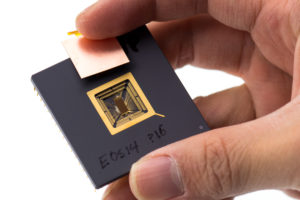As an everyday object and replacement for computers, our smartphone is an important tool for most of the daily needs in lives of many people to the point that it has become impossible to not have one. Sales figures in the smartphone market have been falling since 2016 for the first time.
Replacement cycle of an individual device varies a lot, depending on the origin, income or age of its users. The average replacement cycle for a smartphone has reduced to 21 months globally, which is even less than the statutory warranty obligations in some regions like European Union. Situation is quite worse in some of the emerging economies like Mexico and India where the average replacement cycle is down to 18 and 20 months respectively. In Mexico, things are so bad that 33% of users are likely to replace their smartphones every year. The replacement cycle in developing countries is decreasing owing to cheap availability of Chinese smartphones from manufacturers like Xiaomi etc.
On the other hand, replacement cycle of smartphones in affluent countries has increased as per a report by Kantar Worldpanel ComTech from Feb, 2017. Consumers are not eager to upgrade owing to increasing cost of newer devices with more or less same hardware.
In 2016 in the US, the average consumer kept their smartphone for 23 months before upgrading, up from 21 months in 2014.
Further lack of innovation that matters to a consumer has also resulted in this drop of sales and increase in replacement cycle. Consumers from countries like Western Europe, UK, USA are holding their phones for longer than before. One factor that contributes to this situation is lack of availability of super low cost Chinese devices in these markets.
It is a good thing that in some market there is a substantive growth in used smartphone market. That being so, a grave issue of large number of unused and secondary devices has also piled up in some region of the world like Europe. According to recent report by Bitkom based on survey done on over one thousand individuals in Germany, currently, 85 percent of German citizens have at least one unused cell phone or smartphone laying around unused amounting to a whooping total of over 199 million smartphones in the country. These are basically replacement devices in case of emergencies but then with mostly very outdated software. If the devices have longer replacement cycle, it is important that the firmware and OS is regularly maintained, updated and patched. These updates can be installed via custom ROMs on the smartphones just in case the manufacturer misses important security updates or has discontinued support for a given device. Therefore a smartphone must meet certain requirements. The most important criterion is the possibility to unlock the smartphone’s bootloader. Sadly, some OEMs like Huawei where unlocking of bootloader has been discontinued exists today. So, it is basically, end of the road for devices from Huawei as of yet.
Whether there are custom ROMs for a smartphone largely depends on the chipset used and the distribution of the model in the communities. Lastly, with the introduction of new Generic System Images (GSI), starting Android 8 or later things have eased for the developers and maintainers of custom ROMs. GSI allows support for different devices with the same custom ROM. There are a variety of reasons why people modify software on their devices. You have very little to lose and a lot of gain. With customs, you have to ability to get state-of-the-art Android version along with recent security patches along with amazing features that most custom ROMs offer over stock ROMs. There is a privacy factor too which is being taken into account by a few educated adopters or pro users.
The best-known Android derivative among custom ROMs is LineageOS. It is simply a continuance of previously popular community project called CyanogenMod, which was discontinued at the end of 2016. Today it is a one of largest community project and still growing strong with over 50 million active users. At the beginning of this year, it released a new Lineage version, 17.0 / 17.1 based on Android 10. Android 10 was officially released in September of 2019, although in the same month Android 8.x had a market share of 25.69% world-wide. It is self-explanatory. OEMs did not bother to update their devices enough or at all. Even capable devices are not updated regularly. For instance OnePlus 5 has not received Android 10 update in India, till date despite numerous announcements and promised. It is not about capability of device, it is about somehow getting you to buy a new device.
Thanks to CyanogenMod, it has been possible for several years to install Google Play Services on custom ROMs. A legal dispute over installed Google Apps in the first CyanogenMods was settled. The two parties agreed to make the Google services available as a separate package for custom ROMs through the Open Gapps project. This ensures the full functionality of a stock ROM.
Other popular custom ROMs include Omnirom, another successor to CyanogenMod. PixelExperience aims to bring the beauty in user interface of Google Pixel devices on other popular smartphones models. Other popular ROMs are Descendant, CrDroid, Bootleggers or /e/OS, a fork from LineageOS with microG pre-configured, where the goal is to completely do without Google with least friction. It is one of the Android based custom ROM that has gained momentum and attracted attention from a good OEM like Fairphone.
There is something called Porting too. Porting StockROMs from other manufacturers is a special kind of modified software. For example OxygenOS is ported from OnePlus devices to devices of other manufacturers. Another prominent example of such modified stock software is xiaomi.eu, which is based on the MIUI interface of Xiaomi devices.



